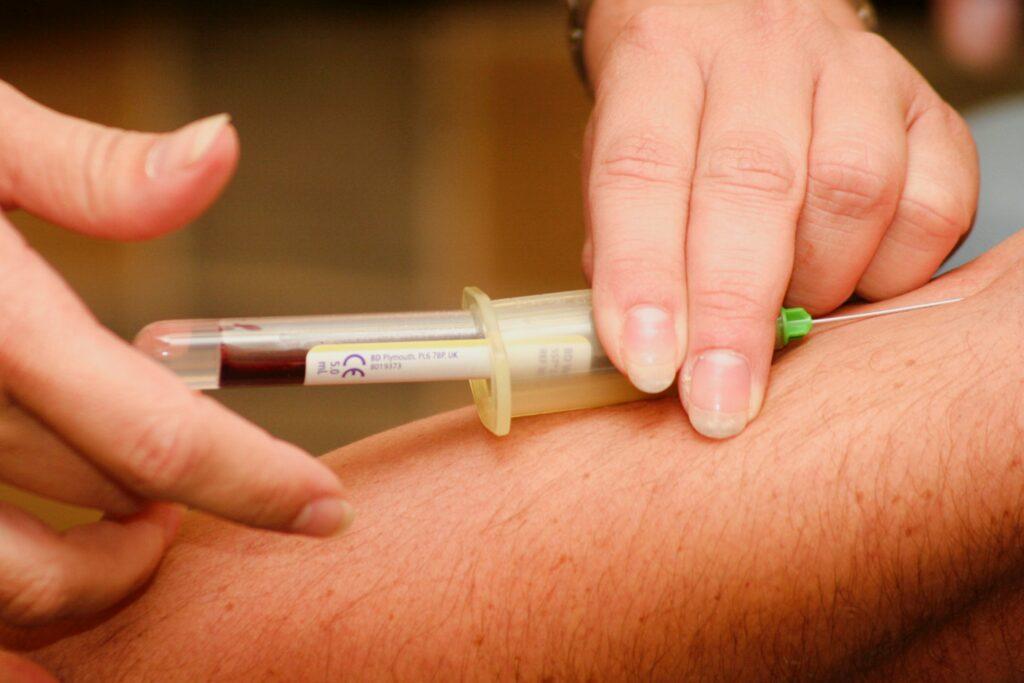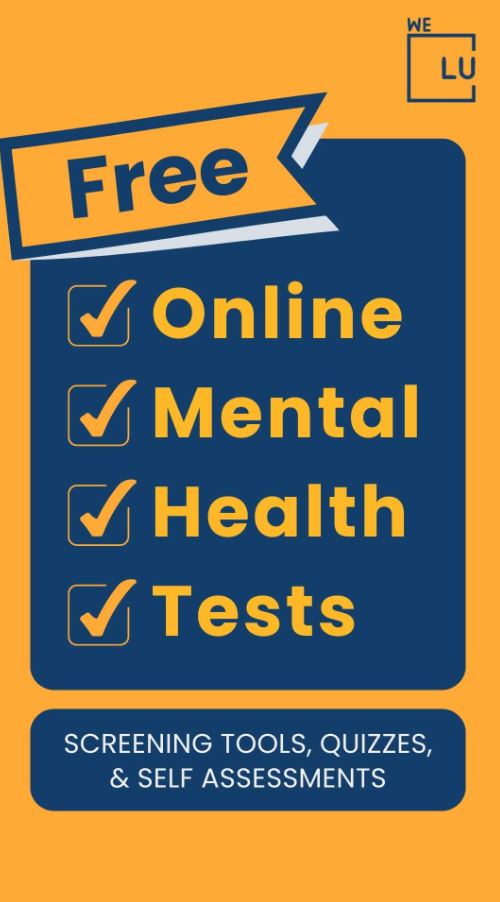How Long Does Meth Stay In Your Blood?
Meth, also known as methamphetamine, can stay in your blood for a variable amount of time depending on several factors, such as the amount and frequency of use, the individual’s metabolism, and the method of use. Meth can be detected in the blood as early as an hour after use and may remain detectable for up to 48 hours.
It is critical to prioritize your health and well-being and to seek professional medical help if you have concerns about meth use. A qualified healthcare professional can guide treatment options and offer recovery support.
How Long Does Meth Stay In Blood Warning
Meth can accumulate in other body parts, including hair, saliva, and urine, and can be detected for extended periods. Meth can remain detectable in hair for up to 90 days, in saliva for up to 3 days, and in urine for up to 3-5 days. Continue reading about how long does meth stay in your blood?
How Long Does Meth Stay in Your Blood Chart
Meth drug test detection times can vary depending on the sensitivity of the testing method. The “how long does meth stay in blood” chart shows that:
- For occasional users or low doses: Meth can typically be detected in blood for 24-48 hours after use.
- For chronic users or higher doses: Meth can be detectable in blood for 2-3 days after use.
Remember that these are rough estimates based on average detection times. Individual factors such as metabolism, weight, age, and overall health can impact how long meth stays in the body’s bloodstream.
Moreover, it is important to remember that meth can have serious consequences and is associated with a higher risk of developing addiction, experiencing heart problems, decreased cognitive function, and other negative physical and mental effects. Therefore, seeking professional medical help is encouraged if you struggle with problematic drug use.
| Body System | Time in System |
|---|---|
| Blood drug test | up to 48 hours |
| Hair drug test | 90 days |
| Urine drug test | 72 hours; longer for heavy users |
Learn more about how long does Meth stay in your system.
What is Meth?
Meth is a stimulant that is highly addictive and can lead to addiction after just one use. The drug’s dopamine rush mostly causes this. Dopamine is a neurotransmitter that affects motivation, memory retention, learning, and reward processing and makes us feel good.
Meth produces a rush of dopamine significantly greater than the amount naturally created in the brain, which leads users to keep using the substance to maintain elevated and happy feelings.
For many Meth users, the drug is used over the course of many days, during which time they remain permanently euphoric. This frequently results in the development of tolerance; after using the medication repeatedly, a person will need ever greater doses to have the same effects as previously. Due to the stimulant effects and low cost of the substance, addiction can develop quickly.
When trying to stop using meth, it may become challenging to feel cheerful, and when it wears off, withdrawal symptoms, including anxiety, sleeplessness, lethargy, and sadness, may appear. Withdrawal’s crippling effects reinforce abusive behavior and increase the chance of bingeing. If a person’s reward system becomes reliant on the substance, their fear of withdrawal and meth cravings can completely take over their lives.
How Long Does Meth Stay in Blood?
Are you are curious how much time methamphetamine stays detectable in the bloodstream? Understanding this depends on various factors, including metabolism and lifestyle choices. Continue reading.

Skip To:
Learn More:
- How Long do Crystal Meth Stay in Your System?
- Snort Meth, Signs, Dangers, and Effects
- How Long Do Meth High Last?
- Meth vs Speed, What is The Difference?
- Meth vs Crack, Are They The Same? What’s The Difference Between Crack and Meth?
- What is P2P Meth? The Destructive Effects of Meth P2P
- What Are Meth Bugs and Why Do They Occur?
- What Does Crystal Meth Look Like? What Does Meth Look Like?
- How Long Does a Meth High Last? Effects Of Meth Addiction
- Is There a Meth Poem? My Name is Meth & Drug Rehab
- Pink Meth, Dangers, Effects & Rehab Treatment
- What is Blue Crystal Meth? Blue Sky Meth
- How to Get Meth Out of Your System?
- Meth Before and After. Pictures of Meth Users Before and After Show Horrific Changes.
- What are Bongs for Meth?
- Adderall vs Meth: What’s the Difference?
Meth Addiction Symptoms
Meth is one of the most deadly drugs available due to its severe psychological and physical toll on the body. Meth profoundly impacts a user’s body and brain, and these symptoms and warning signals can be seen in several ways.
An abrupt loss of interest in activities once meaningful to the person is among the earliest signs of meth consumption. The pursuit of and use of meth will start to take precedence over interests, relationships, and professional aspirations.
Many people will first try to conceal their drug use, but the more time someone spends using Meth, the more noticeable it becomes. Due to the molecular changes caused by methamphetamine, what was previously a recreational drug use might become a top priority in one’s life. The frequency and the quantity used dramatically impact how long does meth stay in blood.
How Long Does Meth Stay In The Blood?
Meth, also known as methamphetamine, can remain detectable in the blood for up to 2-3 days after use for chronic users or higher doses and up to 24-48 hours for occasional users or low doses. It is important to remember that this is a rough estimate and can vary depending on factors such as metabolism, weight, age, and overall health.
It is worth noting that the duration of meth detection varies depending on the type of tests used to detect the presence of the drug in the bloodstream. Standard laboratory tests generally detect meth for just a few days, while more advanced drug testing methods, such as gas chromatography-mass spectrometry (GC-MS) or liquid chromatography-tandem mass spectrometry (LC-MS/MS), can detect meth for up to several weeks or even months in some cases.
It is essential to understand that meth use can have serious consequences and lead to addiction, physical and mental health problems, and a range of negative consequences in one’s personal and professional life. If you or someone you know struggles with meth use, seeking support from a licensed healthcare professional can be a crucial step toward recovery.
What Are The Signs Of A Meth Addiction?
Meth abusers and addicts will show a range of behavioral and physical signs. Among the most typical meth symptoms are:
- Hyperactivity
- Twitching, facial tics, jerky movements
- Meth High Symptoms: Paranoia
- Dilated pupils
- Noticeable and sudden weight loss
- Skin sores
- Rapid eye movement
- Reduced appetite
- Agitation
- Burns, particularly on the lips or fingers
- Erratic sleeping patterns
- Rotting teeth
- Outbursts or mood swings
- Extreme weight loss
“Tweaking,” a period of anxiety and insomnia that can persist for three to fifteen days, is another obvious sign of meth use. Tweaking happens at the end of a drug binge when a meth user can no longer experience the rush or high.
Due to the need to use it again, tweaking can have psychological adverse effects like paranoia, impatience, and confusion. Meth-related tweaking can also lead to hallucinations and a propensity for violent conduct.

Get Your Life Back
Find Hope & Recovery. Get Safe Comfortable Detox, Addiction Rehab & Dual Diagnosis High-Quality Care.
Hotline(844) 597-1011Methamphetamine Factsheet
What is Methamphetamine?
Meth is a highly addictive stimulant that can cause addiction in as little as a single use. This is mainly due to the rush of dopamine produced by the drug. Dopamine is a chemical that’s not only responsible for inducing feelings of pleasure but also for motivation, memory retention, learning, and reward processing. The rush of dopamine produced by Meth is much higher than the natural amount of dopamine produced in the brain, which causes people to continue using the drug to keep those heightened and pleasurable feelings.
Methamphetamine Effects
Abuse of methamphetamine includes any illegal usage of the drug. When smoked or injected, meth causes a “rush” similar to that experienced when using crack cocaine; this is brought on by increased heart rate, blood pressure, and pleasure-inducing neurotransmitters in the brain. Snorting meth produces an ecstatic feeling but not a rush.
The infusion rush produces the biggest effects, lasting up to 30 minutes. Depending on the drug’s use, users enjoy a sustained high that can continue between 8 and 24 hours after the first surge. Meth injection delivers a higher high than smoking or snorting it, although it lasts less.
Meth can negatively impact an individual’s physical and mental health. It can cause various physical symptoms, such as rapid heartbeat, dilated pupils, sweating, and high blood pressure. Long-term use can also cause more serious and lasting effects, such as heart damage, respiratory problems, and damage to the liver, kidneys, and other organs.
Taking meth also negatively affects the brain, including impaired cognitive function, confusion, anxiety, paranoia, and hallucinations. Meth use can also increase the risk of developing mental health issues such as depression, anxiety, and bipolar disorder.
Additionally, meth addiction can lead to problems in an individual’s personal and professional life, such as damaged relationships, job loss, and financial difficulties. Moreover, studies indicate that those who use meth are more likely to engage in risky behavior that can put their health and safety at risk.
If you or someone you know is struggling with problematic drug use, seeking help and treatment is important. Recovery from addiction is possible, and a range of evidence-based therapies and treatments are available to address the physical and psychological aspects of meth addiction. Qualified healthcare professionals can assist in identifying a suitable treatment plan tailored to the needs and goals of the individual.
Street Names for Methamphetamine
Meth and Crystal Meth are chemically identical substances, despite the differences in the structural composition of the two varieties. Methamphetamine goes by the following street names:
- Glass
- Speed
- Ice
- Crystal
- Crank
- Tweak
- Redneck Cocaine
- Chalk
The vast bulk of meth sold today comes from imports and clandestine labs. A few people often generate modest amounts of the material in “home labs” or “stove tops,” where the product is typically cooked. Meth is also made in cartel “super labs,” which use high-end machinery to generate the drug in greater quantities and with superior quality.
The stimulant Ephedrine or Pseudoephedrine, present in certain popular over-the-counter cough and cold treatments, is often the main component in meth. Meth labs are famously hazardous due to the toxic and flammable gases and chemicals generated during the production of the drug.
Methamphetamine Statistics
550 Million
Meth costs the United States $550 million in drug treatment programs annually.
Source: NIDA
16 Million
According to the 2017 National Survey on Drug Use and Health, 1.6 million people reported using Meth in the past year.
Source: NIDA
964.000 People
An estimated 964,000 people aged 12 and older qualified as having a Meth use disorder in 2017.
Source: NIDA
How Long Does Meth Stay In Your Blood System? How Long Does Meth Stay In Your Blood Stream? How Long Does Crystal Meth Stay In Your Blood?
How Long Does Meth Stay In Ur Blood? How Long Is Meth In Blood? How Long Does Meth Stay In Blood Stream?
How Long Does Meth Stay in Your Blood? Meth enters the bloodstream and begins to be absorbed by the body immediately. Some methamphetamine may even undergo some internal amphetamine conversion. Meth and amphetamines are both processed by the liver and kidneys. They are in charge of removing the drug from the body through the urinary system, ultimately eliminating it.
Meth, or methamphetamine as it is scientifically known, is an illicit substance that gives its user stimulant benefits. Although having no medicinal use, it induces a pleasant experience by boosting dopamine levels in the brain.
One of the primary brain chemicals, dopamine, creates pleasurable experiences and encourages a person to feel good. This drug is categorized as a Category II substance because of its extreme addictiveness. Any prolonged use of this substance might have negative psychological or physical effects.
How Long Does Meth Stay in Your Blood? The quantity of meth consumed, the frequency of usage, and the kind of drug test used to detect the drug all affect how long meth will remain in your system and how long it will appear on a drug test. Each person’s rate of meth metabolization is different, but research can provide some general parameters.
How Long Does Meth Stay in Your Blood? Meth’s half-life is thought to be between 12 and 34 hours, according to research. However, the effects of the medicine start to take effect somewhere between eight and 24 hours after use. The blood’s concentrations gradually drop. Because meth takes so long to leave the body, you may experience its effects for up to 10 days after using it.
Get Help. Get Better. Get Your Life Back.
Searching for Accredited Drug and Alcohol Rehab Centers Near You?
Even if you have failed previously and relapsed, or are in the middle of a difficult crisis, we stand ready to support you. Our trusted behavioral health specialists will not give up on you. When you feel ready or just want someone to speak to about therapy alternatives to change your life call us. Even if we cannot assist you, we will lead you to wherever you can get support. There is no obligation. Call our hotline today.
(844) 597-1011How Long Does Meth Stay In Your System Blood Test? How Long Can Meth Be Detected In Blood? How Long Is Meth Detectable In Blood?
How Long Does Meth Stay in Your Blood? When drawing blood to test for drugs or alcohol, the question “how long does meth stay in blood” is frequently asked. Seldom would blood be obtained and tested for methamphetamine instead of a urine sample, although it does happen occasionally.
How Long Does Meth Stay in Your Blood? The crystalline or powdered variety of meth is one of the most widely used types. On the streets, this substance is referred to as Crystal Meth. The medication can be smoked, snorted, or injected directly into the blood. In a urine, saliva, hair follicle, or blood test, crystal meth will be detected immediately; however, the turnaround time for each type of analysis differs.
The half-life is roughly 12 hours when taking into account your blood levels. As a result, it can persist in the blood and test positive up to 72 hours after use. Meth usage can cause the substance to remain in the blood for up to 10 days in heavy users, making any drug test performed positive.
Does Meth Show Up In Routine Blood Work? Meth In Blood (Meth Levels In Blood)
How Long Does Meth Stay in Your Blood? The greatest place to look for drug usage is in the hair, which can keep some substances for up to 90 days after use. It doesn’t matter if you trim, bleach, or even dye your hair a different color. Still, meth use will be evident. As new hair grows, the follicle takes nutrients from the blood because your body functions as one integrated system. As a result, the follicle will use meth in the bloodstream as a source of nutrition to produce new hair cells. A long-term user won’t be able to conceal their drug use from a hair follicle test.
How Long Does Meth Stay in Your Blood? Several factors can influence how long meth is detectable in your bloodstream:
- The frequency of use.
- The amount you last used.
- Your liver and kidney function.
- The type of testing used to detect the drug’s presence (blood, saliva, hair follicle, urine).
This indicates that the greatest way to get meth out of your system is time, assuming you’re interested. You only experience the effects of around 46% of the meth you use since the body excretes roughly 54% of it unmodified. This medication will appear in the blood within two to three hours of use, the urine within two to five hours, and the saliva within ten minutes. Meth use takes approximately five days to manifest on a hair follicle test.
To ensure they have an accurate image, several police departments or employment screenings will run one or two distinct sorts of tests. A hair follicle test is significantly more expensive than a urine test, even if some tests are more sensitive.
First-class Facilities & Amenities
World-class High-Quality Addiction & Mental Health Rehabilitation Treatment
Rehab Centers TourRenowned Addiction Centers. Serene Private Facilities. Inpatient rehab programs vary.
Addiction Helpline(844) 597-1011Proven recovery success experience, backed by a Team w/ History of:
15+
Years of Unified Experience
100s
5-Star Reviews Across Our Centers
10K
Recovery Success Stories Across Our Network
- Low Patient to Therapist Ratio
- Onsite Medical Detox Center
- Comprehensive Dual-Diagnosis Treatment
- Complimentary Family & Alumni Programs
- Coaching, Recovery & Personal Development Events
Meth Addiction Treatment
Meth withdrawal management involves removing the substance from the body while a group of medical experts assists the patient in controlling their withdrawal symptoms. The first phase of a treatment program for substance use disorders (SUD) frequently involves managing meth withdrawal, sometimes known as detox.
Most patients, such as inpatient or outpatient rehab, will benefit from further care following detoxification. After completing a medically assisted detox program, patients will receive assistance in selecting the best program to address their addiction’s behavioral and social aspects (as well as other pertinent needs).
Medically assisted detox for meth withdrawal may have the following advantages:

- Risk assessment for medical and mental health issues. Medical supervision can help someone stay safe because meth withdrawal might cause extreme depression or suicidal thoughts.
- Supplying framework and assistance. This can aid in a person’s recovery and help them prepare for additional therapy.
- Removing a user of meth from their environment. This can lessen cravings brought on by environmental cues that might trigger a relapse.
- As necessary, offering dietary assistance. Someone battling meth addiction may need support, such as larger or high-calorie meals, electrolyte supplements, or contact with a food professional. Meth consumption has been linked to weight loss and inadequate nutrition.
As was already said, patients may enroll in inpatient rehabilitation or outpatient therapy after completing detox. Several behavioral therapies used in professional treatment can offer many advantages, including:
- Helping a patient learn ways to prevent relapse.
- Teaching a patient healthier coping and stress management skills.
- Helping a patient uncover and work through the underlying reasons they developed an addiction in the first place.
Inpatient rehab offers the additional benefit of round-the-clock supervision and assistance to help patients be safe and take care of any co-occurring problems that may develop. If a person has co-occurring psychiatric disorders or life-threatening medical issues, this additional help may be very important.
A person who is addicted to methamphetamine may benefit from the following behavioral therapies:
- Cognitive-behavioral therapy (CBT). This aids patients in recognizing negative or unhealthy attitudes and behaviors that fuel their substance usage and helping them modify them. According to some studies, CBT and contingency management are particularly effective in treating amphetamine addiction.
- Contingency management (CM). When someone demonstrates a desired behavior (like passing a drug test), it offers concrete rewards; however, if the desired behavior is not demonstrated, the reward is withheld.
Ensuring a patient gets enough food and exercise during detox and throughout all phases of treatment is crucial for keeping them healthy as they recover.
Can You Die From Meth Withdrawal?
It’s important to remember that while meth withdrawal might be challenging and uncomfortable, it is not life-threatening. Fatigue, anxiety, and depression are among the symptoms of meth withdrawal that are most common. Even while these symptoms may be unpleasant, they are not harmful.
You can get through meth withdrawal and start down the road to recovery with the right help and direction. Please get professional treatment if you or someone you know is battling meth addiction. There is no shame in requesting assistance. Recall that meth addiction is a serious illness that necessitates medical attention.
Medication For Meth Addiction
Meth withdrawal (Meth Withdraws) can neither be treated with drugs nor can stimulant use disorder be treated with drugs that have FDA approval. If a person undergoes medically supervised detox, they could be given additional medications to treat some of the withdrawal symptoms they might experience, such as headaches or insomnia.
How To Help A Meth Addict? How To Help Meth Addicts?
You must balance acknowledging their plight and urging them to get assistance if you want the greatest outcomes. Consider these actions to assist your loved one as a guide for your procedure.
- Learn about the condition
- Decide if you will address your loved one’s addiction
- Start the conversation
- Make yourself a priority
World-class, Accredited, 5-Star Reviewed, Effective Addiction & Mental Health Programs. Complete Behavioral Health Inpatient Rehab, Detox plus Co-occuring Disorders Therapy.
CALL(844) 597-1011End the Addiction Pain. End the Emotional Rollercoaster. Get Your Life Back. Start Drug, Alcohol & Dual Diagnosis Mental Health Treatment Now. Get Free No-obligation Guidance by Substance Abuse Specialists Who Understand Addiction & Mental Health Recovery & Know How to Help.
We Level Up Dual Diagnosis Treatment
The definition of dual diagnosis (also referred to as co-occurring disorders) can differ between institutions. However, it is generally described as the specific treatment of someone diagnosed with a substance use disorder and a mental health disorder simultaneously. Treating dual-diagnosis clients is a critical aspect of our inpatient treatment experience because co-occurring disorders are strongly correlated with instances of substance abuse.
Creating a treatment plan that addresses the physical aspects of withdrawal, the psychological connection with drug use, and managing underlying mental health disorders is part of setting clients up for success. A thorough mental health analysis identifies possibilities for treatment. Meeting with mental health counselors and medical care providers means access to behavioral therapy and medication treatment. At our dual diagnosis treatment center, We Level Up can implement the highest quality of care.
We recognize the fragile complexities of how mental and substance abuse disorders can influence others and sometimes result in a vicious cycle of addiction. That’s why we offer specialized treatment in dual-diagnosis cases to provide the most excellent chance of true healing and long-lasting recovery.
Accepting that you may be living with a mental illness can be challenging. However, treating the presenting substance abuse case can be magnitudes easier once properly diagnosed and treated. Only a properly trained medical professional can diagnose these underlying conditions. If you believe you are suffering from a disorder alongside addiction, we urge you to seek a qualified treatment center to begin your journey to recovery. Call We Level Up today.
Experience Transformative Recovery at We Level Up Treatment Centers.
See our authentic success stories. Get inspired. Get the help you deserve.
Start a New Life
Begin with a free call to an addiction & behavioral health treatment advisor. Learn more about our dual-diagnosis programs. The We Level Up Treatment Center Network delivers recovery programs that vary by each treatment facility. Call to learn more.
- Personalized Care
- Caring Accountable Staff
- World-class Amenities
- Licensed & Accredited
- Renowned w/ 100s 5-Star Reviews
We’ll Call You
How Long Does Meth Stay in Your Blood? Meth Informative Video
The term “the faces of meth” refers to the loss of facial physicality in many meth users. Before and after photographs of meth abuse victims with deformed faces demonstrate the terrible harm that has been done. Learn about meth addiction’s adverse effects, warning indications, and treatment alternatives. Read about the dangers of meth mouth teeth decay.
Search We Level Up How Long Does Meth Stay in Your Blood? Resources
Sources
[1] National Institute of Mental Health – ‘Depression’ (www.nimh.nih.gov)
[2] U.S. Food and Drug Administration (FDA) (www.fda.gov/)
[3] Depression Treatment » Drug Alcohol Addiction Rehab
[5] NIMH – https://www.nimh.nih.gov/health/publications/social-anxiety-disorder-more-than-just-shyness
[6] Selective Serotonin Reuptake Inhibitors – National Center for Biotechnology Information, U.S. National Library of Medicine
[7] ‘Anxiety Disorders’ – National Institute Of Mental Health (Nimh.nih.gov)
[8] Psychopharmacology of anxiety disorders – National Center for Biotechnology Information, U.S. National Library of Medicine
[9] Products – Data Briefs – Number 379 – September 2020 (cdc.gov) Depression – National Institute of Mental Health
[10] Coping with Stress – Centers for Disease Control and Prevention






